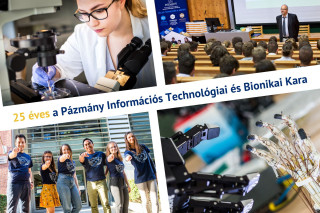
The Hungarian Catholic Bishops' Conference founded the Faculty of Information Technology and Bionics at Pázmány Péter Catholic University on 1 July 1998, on the proposal of Rector Péter Erdő, as a base for multidisciplinary research university education, under the leadership of the internationally renowned professor of information technology, Tamás Roska, academician. In September 2001, the undergraduate programme was launched and the Doctoral School of Interdisciplinary Engineering Sciences started its activities at the same time. The aim of the Faculty is to teach human-centred information technology, with a broad foundation in basic subjects including elements of life sciences: to train professionals in the constantly evolving cutting-edge technologies who, equipped with deep and multidisciplinary theoretical knowledge and literacy, as well as modern and ethical management skills, will be creative practitioners of a wide range of modern practical problems and scientific research. In addition to computer engineering, the engineering field of bionics is also a priority. This area builds on the close link between electronics and biology, teaching and researching the development, programming and application of devices that help cure, rehabilitate or improve the lives of sick or injured people. The Faculty pays particular attention to the basic and subject-specific aspects of education, beyond the foundations of mathematics and physics, in the fields of neurosciences, biochemistry, information technology, language, law, economics and communication, and the courses are also strongly grounded in the humanities. The Faculty is engaged in internationally significant research activities in areas such as neuromorphic information technology, nanotechnologies, neurosciences, nature-driven computing, human language technologies, the relationship between artificial electronics and living cells, the impact of new information technologies and machine learning on education, organisations, legal and economic structures, and medical imaging diagnostics using high-performance computing.